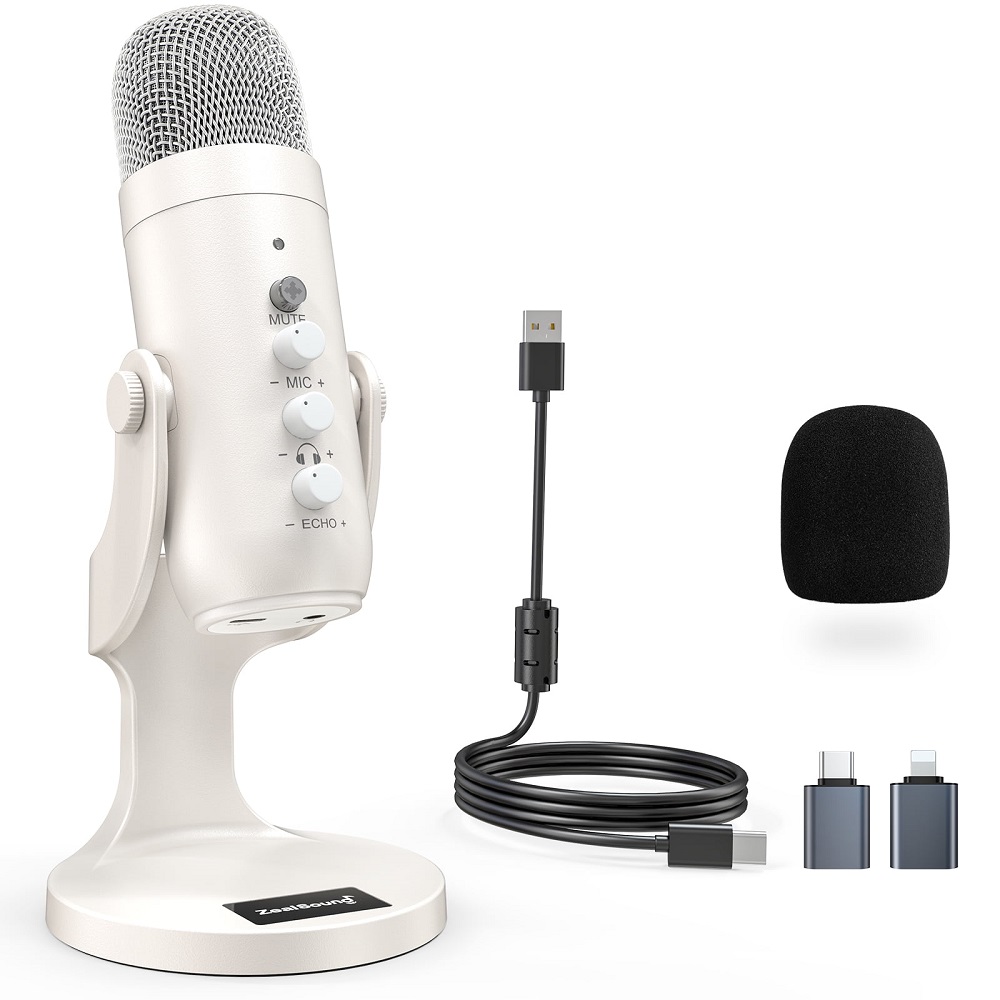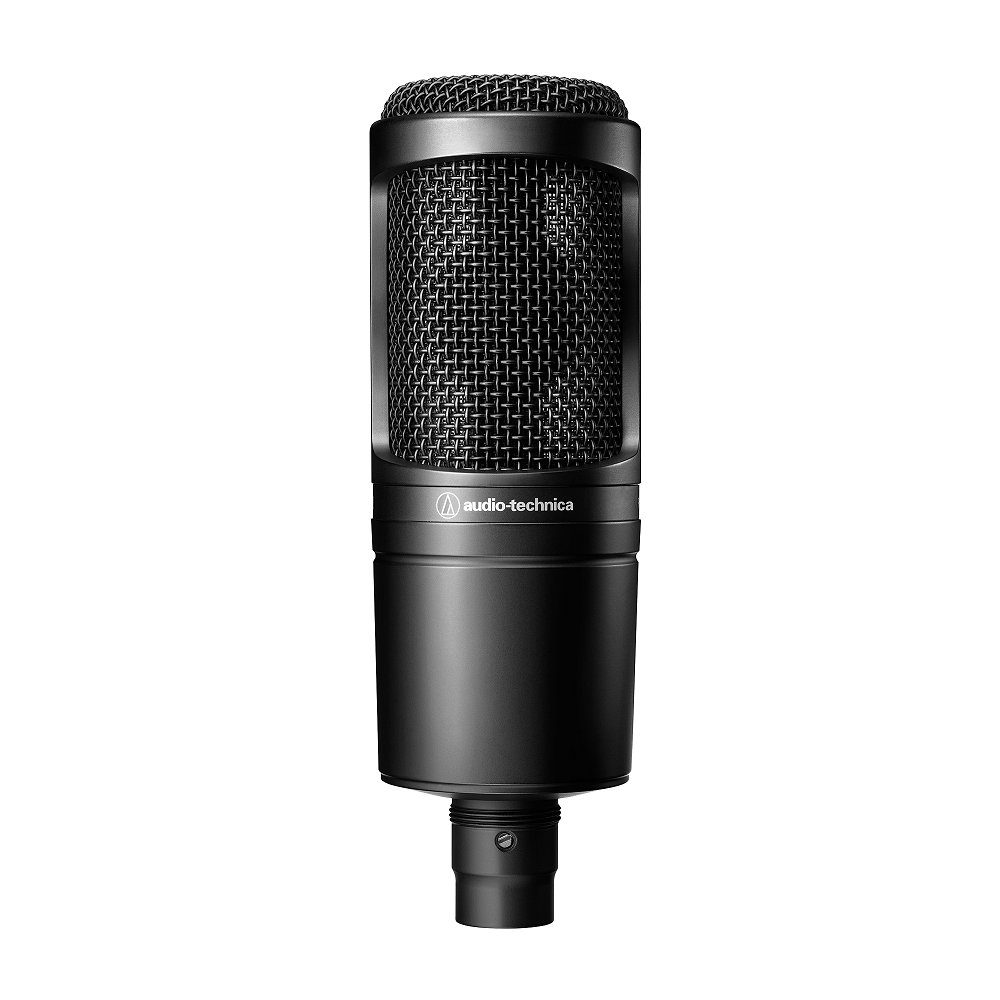Types of Recording Microphones
Choosing the right recording mic can feel overwhelming with various options available. To help, let’s dive into the major types.
Dynamic Microphones
Dynamic microphones are the sturdy workhorses of the recording industry. They are well-suited for live performances and loud sound sources. These mics handle high sound pressure levels well. They are less sensitive to subtle nuances, so they’re perfect for recording loud instruments like electric guitars and drums.
Condenser Microphones
Condenser microphones capture sound with precision and clarity. They require power from batteries or an external source. The nuanced sound capture makes them a top choice for vocals and acoustic instruments. They feature a wide frequency response, offering richer and finer audio detail.
Ribbon Microphones
Ribbon microphones are known for their warmth and classic sound. They contain a thin metal ribbon that vibrates with the sound. These mics are more delicate and can capture the subtle details in music or speech. They are ideal for those looking for a vintage vibe in their recordings.
USB Microphones
USB microphones offer a plug-and-play solution for easy recording. They connect directly to a computer without the need for additional equipment. While they may not match the quality of professional microphones, they are suitable for podcasters, streamers, and home studios. The convenience of USB mics makes them a practical choice for quick and simple setups.

Key Features to Consider
When selecting a recording mic, there are several key features you need to consider. These features directly influence the sound quality and usability of the microphone for various recording situations.
Polar Patterns
Polar patterns describe how well a microphone picks up sound from different directions. There are three main types:
- Cardioid polar patterns pick up sound primarily from the front, making them ideal for isolating a sound source.
- Omnidirectional microphones capture sound equally from all directions, useful in situations where you want to record ambient sounds.
- Bidirectional or figure-8 patterns pick up sound from the front and back, perfect for recording two sources facing each other.
Frequency Response
Frequency response reflects the range of sounds a microphone can capture. A broader frequency response is often better because it can register both low and high tones, providing a more complete representation of the sound.
Sensitivity
Sensitivity measures how effectively a microphone converts acoustic sound into an electrical signal. A higher sensitivity is generally preferred for picking up subtle nuances, but may also capture unwanted background noise.
Connectivity Options
Connectivity options determine how the microphone connects to other devices. Common connections include:
- XLR for professional audio equipment.
- USB for direct computer recording, ideal for home studios.
- 3.5mm jack for simple plug-and-play options, often seen in lavalier or video mics.
Consider these features when choosing a recording mic to ensure you get the best sound for your specific needs.
Best Practices for Recording Various Instruments
Recording different instruments requires specific techniques to ensure the best sound quality. Here’s what you need to know.
Vocals
For vocals, consider a large-diaphragm condenser recording mic for clarity and detail. Use a pop filter to minimize plosives and a shock mount to reduce handling noise. Aim for a cardioid polar pattern to isolate the singer from background noise.
Acoustic Guitars
When recording acoustic guitars, a small-diaphragm condenser mic captures the nuances and brightness. Position the mic close to the 12th fret, but away from the sound hole to avoid boominess. Cardioid mics work well here too, targeting the sound source and rejecting off-axis sounds.
Drums
Dynamic mics are the go-to for recording drums due to their ability to handle high SPLs. For the kick drum, use a mic with a low-frequency response. Place mics close to the snare and toms, and employ condenser mics overhead to capture cymbals and the overall kit.
String Instruments
For string instruments like violins and cellos, a condenser mic provides the sensitivity needed for detailed sound capture. Avoid placing the mic too close to prevent harshness. A slight distance allows for a natural blend of the instrument’s body and string sound.
Understanding Microphone Specifications
Understanding the technical specifications of a recording mic can be crucial. Let’s explore key specs that affect performance.
Impedance and SPL Handling
Impedance refers to the resistance a microphone offers to the electrical signal. Lower impedance usually means better quality, as it can send the signal over longer cables without loss. Aim for mics with impedance below 600 ohms.
Sound Pressure Level (SPL) handling indicates the maximum volume a mic can take without distorting. Dynamic mics often have high SPL handling, making them ideal for loud sources like drums.
Signal-to-Noise Ratio
This spec measures the level of the audio signal compared to the level of background noise. A higher ratio means clearer recordings with less unwanted noise. Look for a high signal-to-noise ratio to ensure clean audio captures.
Top Brands and Models in the Market
Choosing a recording mic often leads to evaluating various brands and models. Top manufacturers pride themselves on quality and performance. Here we will highlight some popular and budget-friendly options.
Popular Choices for Professionals
Professionals look for reliability and top-tier audio fidelity in recording mics. Some leading brands include:
- Neumann: Known for high-end studio mics, like the Neumann U87, famed for its warmth and precision.
- Shure: Offers robust mics such as the Shure SM7B. It’s a favorite for its versatility and durability.
- AKG: The AKG C414 is a multi-pattern condenser microphone preferred for its detailed sound and adaptability.
- Audio-Technica: The AT4050 is versatile and delivers a natural sound, making it great for various applications.
These brands have earned trust among sound engineers and musicians alike for their superior sound and build quality.
Budget-Friendly Options for Home Studios
For those starting or on a budget, several brands offer quality without breaking the bank:
- Behringer: The Behringer C1 is an affordable condenser mic that offers a good introduction to home recording.
- Blue Microphones: The Blue Yeti is a popular USB mic, perfect for podcasting and basic home studio work.
- Samson: Products like the Samson C01 provide good sound quality at a lower cost, suitable for up-and-coming artists.
- MXL: MXL mics, like the MXL 990, deliver acceptable performance for entry-level recording needs.
Home studio enthusiasts can find decent options that do not compromise too much on quality while staying affordable. Brands such as Behringer, Blue, and Samson provide users with the tools to record without a large investment.
Utilizing Accessories and Equipment
To achieve the best recording quality, using the right accessories and equipment with your recording mic is crucial.
Shock Mounts and Pop Filters
Shock mounts help to reduce noise from vibrations and handling. They secure the microphone in place, minimizing rumble. For vocal recordings, pop filters are essential. They prevent plosives, like ‘p’ and ‘b’ sounds, from causing peaks in the audio.
Mic Stands and Booms
A sturdy mic stand is necessary to position the microphone correctly. Booms extend the reach of mic stands, allowing for flexible placement. They are especially useful for instruments or situations where direct mic placement is difficult.
Cables and Preamps
High-quality cables ensure clear signal transfer without loss or interference. For dynamic and ribbon mics, a good preamp is key. It boosts the mic’s signal to a usable level, adding warmth and clarity to the recording.
Tips for Mic Placement and Room Acoustics
Good mic placement and room acoustics are key to capturing the best sound. Below are strategic tips to help.
Strategies for Optimal Sound Capture
- Location: Place the recording mic at a distance where it can best capture the source. For vocals, a few inches away is ideal.
- Angle: Aim the microphone towards the sound you want to record. This focuses on the desired audio while minimizing background noise.
- Height: Adjust the mic to the level of the source. For instruments, consider the part that emits the most sound.
- Isolation: Use isolation shields to prevent sound reflections. This reduces unwanted reverb and echo.
- Test and Listen: Always test your setup. Record a sample and listen back. Adjust the placement until the desired sound is achieved.
Dealing with Room Echo and Noise
- Padding: Add foam padding or blankets to walls to absorb sound. This reduces echo in the room.
- Carpets: Use carpets on hard floors. They help in damping bouncing sound waves.
- Furniture: Arrange furniture to break up sound paths. Bookshelves and sofas can act as diffusers.
- Window Treatments: Hang heavy drapes over windows. They can serve as an extra barrier to outside noise.
- Silence the Room: Turn off fans, air conditioners, and other appliances that make noise. Even subtle sounds can be picked up by the recording mic.
By using these tips, you can greatly improve the quality of your recordings. Make sure to check your room’s acoustics and adjust your recording mic’s placement to get the best possible sound.


